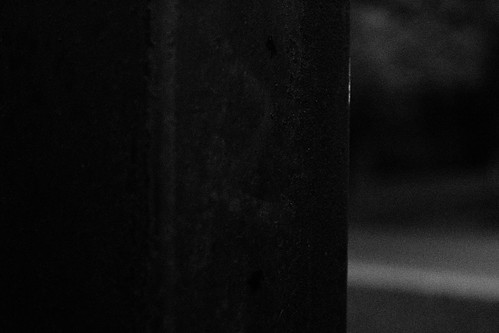This is Lytro, part 2. Today, the Lytro light field camera was officially announced. It will come in a few sizes and colours, it will cost 400 or 500 dollars, depending on the amount of memory you want.
Though it's a very intriguing camera, with very interesting technology, this is why the camera will simply not work:
a) As I mentioned in my previous thoughts on the Lytro camera, the only way to end up with an image is to install some software and process the image to the final product. I sell cameras and the majority of people tell me, when I ask what kind of camera they're looking for, say something simple, that takes good pictures and that they don't have to think about. They want a camera that will take pictures that they can easily email or put up on Facebook, or go to the local photo store and print. They have absolutely no wish to even begin to think about post-processing any pictures, nor to they even want to start and learn. They are not photographers, they are simply people who want to take pictures and show them to their friends and family. As I pointed out previously, this whole shebang is a system, given you need hardware and software to make it work, and most people want a camera, plain and simple.
b) The software that comes with the camera is, as of now, Mac-only (which just boggles my mind). Iphones and iPads are popular beyond ubiquitousness, but not many people have Macs. True, the Apple marketshare in laptops and PCs is growing, but the total percentage of people using Macs is small. This severely limits the use of the camera by a large chunk of the population. Lytro is working on a Windows version of the software, though why they didn't code for Windows first, given it's massive marketshare is a mystery to me.
c) This was actually going to one of my points in favour of this new system, but as I've been reading about Lytro and its gizmo, it turns out a checkmark in the 'con' column has to be inserted instead. When capturing light fields, the sensor not only captures light, but also the direction in which the light rays are travelling, which enables the camera to know the relation of different objects to each other in the scene, allowing for focusing after the fact. Now, what I was imaging could happen was that you could play around with the depth of field. Because the software knows where everything is, it could as easily create a picture with an f-stop of 0.95 as it could an f-stop of 64. However, the system doesn't allow for an infinite depth of field, which tells me (unless I'm thinking about this in the wrong way), that the f/2 aperture the camera has is rigid and even within the editing software cannot be tampered with. That, to me, is as severely limiting as in standard cameras where you have to pick the focus yourself. What's the point in being able to refocus if you can't play around with the focus? (To be fair, Lytro has said they're working on this issue.)
c, part 2) From what I've read, there is no way to change the shutter speed, aperture or ISO. Maybe this is close-minded of me given the uniqueness of this technology, but without being able to change some of the settings, there's no way to get the perfect shot. (Some people that have had hands-on experience with the camera have said the pictures seem a bit dark unless the scene was well-lit.) There's also no way to create certain effects, like long-exposure shots. This leads me to believe that this camera is more for regular Joes instead of professionals, which again, leads me to my first point. Maybe the software that comes with the camera will be able to brighten or darken a scene, but the only thing I can say to that is, you can't brighten a scene if there's nothing to brighten. (This also leads me to wonder about the resolution of the files. Lytro says the camera captures 11 million rays of light (11 megarays), so how does that translate to actual picture resolution? All the Lytro examples I've seen are actually pretty small in size, and apparently the file size of every picture would roughly equate to my 7D's RAW files, about 25MB per picture.)
c, part 3) The pictures taken can be uploaded to Facebook, for example, with the light field engine, or can be saved as photo files. Neither of these are in, say, JPG, TIFF, RAW or anything of the sort. The files uploaded to the web are saved as Adobe Flash format, which is a very strange format for a picture. This again falls into the post-processing part of things, but it seems very complex simply to create a picture, and most people don't really want to deal with it. Especially with mobile devices, even if the picture is saved as 'html' (as
d) This is more of a personal observation, but I suspect that, if I am thinking it, many people are probably on the same wavelength. The more I read about the camera, the less impressed I am with it. It is roughly the size of a 500ml water bottle (or a little bit shorter), has 8x zoom and a constant aperture of f2. It has built-in memory that cannot be expanded. I've been talking about the general population, and not professionals.
e) Professionals generally have an intent when they take a picture. They want something to be in focus and something to be out of focus (or something to that effect). That effect is what creates the desired emotion in the viewer. Now, if anybody looking at that picture online can focus and refocus that picture, the intended impact flies out the window.
There will no doubt be professionals (or, to be more precise, certain artists) that embrace this kind of picture, and that will allow the viewer to play around with the picture, because this type of camera will create a new type of art, and a new style, in the same way that, say, quadraphonic sound allowed artists to create a more immersive sound field over simple stereo sound. However, this will only be of interest to certain types of people - artists, technology-mongers and early-adopters.
As such, this type of camera will be somewhat of a curio, a funny little piece of technology that people will find interesting to look at, but have no real interest in. This will be a niche product, pure and simple, in the same way that Holga and Lomo cameras are niche cameras. They have a following, but it's definitely in a tiny minority. Much like 3D, over the years, they will probably be waves of interest in light field cameras, but until it can be as versatile and simple as regular cameras, they will not catch on with the digital camera-buying masses.
The camera does have a ton of promise down the line, but this is its first popular iteration and falls short of being impressive. I can only imagine what the possibilities would be. I would, for instance, love to be able to see 3-dimensional light writing, or play around with the focus of such light writing. (Lytro says they're working on 3D support, as well.) Being able to play around with the aperture value within a scene, and being able to recompose the scene (based on the fact that the picture is in three-dimensions) also help with the camera's appeal. Selective colouring, messing around with exposures and white balances, playing with clarity and contrast on different elements within the same scene would also be a lot of fun. Integrating this kind of technology into cell phones would definitely move this technology light years ahead in an extremely short time. However, until the camera becomes as flexible and as easy to use as, say, the Sony HX9, with picture quality (and video quality) to match, there's not much to say or do other than to say, 'huh, isn't that neat?'
Enough of this, onto the pictures!
Frank
His note: A friend's blue spruce.
Shannon
Her note: Wonder how many people will be participating in this?
My picture
It just so happened I took this picture before I knew I was going to talk about Lytro, but it seems kind of fitting given you could easily fiddle with the focus. For some reason I liked the fact that the R is hardly visible on this post, and it creates an interesting look. I boosted the grain and made it black and white simply to give it texture (which is another thing that would nice to do with a light field picture).
I am, once again, looking forward to tomorrow.
PS. For those interested, today is my cat Tux's birthday. He's 1 year old.



No comments:
Post a Comment